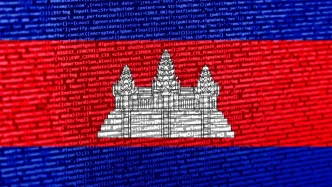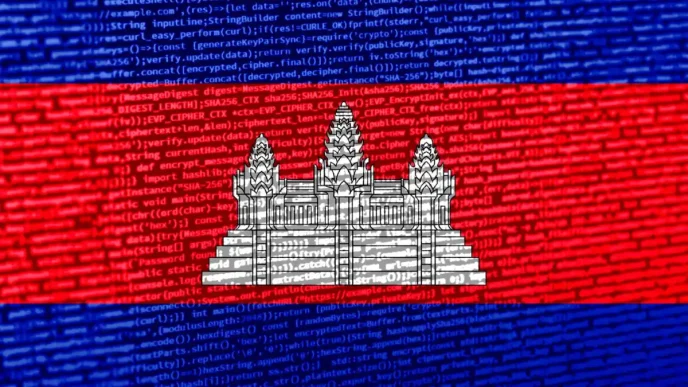Vietnam is grappling with a mounting measles crisis, with the World Health Organisation (WHO) warning of a “very high” risk of outbreaks across the country. In response, the Ministry of Health has launched large-scale vaccination campaigns targeting vulnerable children and healthcare workers in high-risk areas, following a surge of over 45,550 suspected cases in 2024 alone. With 16 deaths linked to the disease last year and a significant proportion of cases affecting infants too young for routine vaccination, the urgency of the situation has prompted innovative strategies to curb transmission.
The WHO’s stark assessment underscores the need for immediate action. In 2024, Vietnam recorded 7,583 confirmed measles infections, a figure that health officials attribute largely to unvaccinated or under-vaccinated children. Alarmingly, around one-fourth of these cases were infants under nine months old—a group not yet eligible for the standard measles vaccine under national guidelines. This gap in immunity, compounded by disruptions to routine immunisations during the COVID-19 pandemic, has left swathes of the population exposed to a highly contagious disease that can be fatal in young children.
A Race Against Time
Vietnam’s response has been swift but faces significant challenges. Since September 2024, the Ministry of Health has rolled out vaccination drives for children aged 1 to 10 years across 31 provinces. Seven provinces have completed the initial phase of this campaign, while 24 others are still administering first and follow-up doses. The scale of the effort reflects the gravity of the threat: measles is preventable through vaccination, yet coverage gaps persist, particularly in rural and underserved regions.
The WHO has issued specific recommendations to tackle the crisis. In areas with active transmission, the agency advises that the first dose of the measles vaccine be given at nine months, followed by a second dose between 15 and 18 months. During outbreaks, an additional supplementary dose for infants aged six to nine months is recommended—a measure deemed safe and effective for protecting the most vulnerable during epidemics. Vietnam’s health authorities have taken this guidance to heart, with plans to prioritise infants as young as six months in 24 provinces experiencing active outbreaks as part of a 2025 prevention strategy. Looking ahead, the Ministry of Health has drafted an ambitious plan for the coming year, targeting high-risk areas with a two-phase vaccination campaign. Phase 1 will focus on provinces identified under specific ministerial decisions, while Phase 2 will expand to 17 additional provinces, including Thái Bình, Hà Nam, and Bắc Giang. Local authorities will tailor the age groups for vaccination based on outbreak severity and vaccine availability, a flexible approach designed to maximise impact. Healthcare workers treating measles patients, particularly those not fully vaccinated, will also be included in the campaign—a critical step to protect frontline staff and prevent further spread.
Vulnerable Populations at Risk
The demographics of Vietnam’s measles cases paint a troubling picture. Infants under nine months, who are not yet eligible for routine vaccination, account for a significant share of infections. This age group is particularly at risk because they rely on maternal antibodies for protection, which may be insufficient if mothers themselves lack immunity due to incomplete vaccination histories. Health officials have noted that many cases involve children who missed doses during the COVID-19 pandemic, when lockdowns and resource constraints disrupted immunisation programmes.
The geographic spread of the disease adds another layer of complexity. Provinces like Ninh Thuận, where children are being vaccinated at centres for disease control, are among those classified as high-risk. Urban centres such as Hanoi and Ho Chi Minh City, with dense populations and frequent movement, also face elevated threats of outbreaks. The Ministry of Health’s focus on tailoring campaigns to local conditions aims to address these disparities, but logistical hurdles—such as vaccine supply chains and public awareness—remain formidable obstacles.
WHO’s Call for Action
The WHO’s recommendations extend beyond immediate vaccination drives. For provinces and cities with low to medium risk, the agency urges health authorities to conduct reviews of catch-up vaccinations for children who missed doses during the pandemic. This preventative measure seeks to close immunity gaps before they escalate into full-blown outbreaks. Globally, measles remains a major public health challenge, with the WHO estimating that unvaccinated children are at the highest risk of severe complications, including pneumonia and encephalitis.
Vietnam’s efforts align with international best practices, but the scale of the challenge requires sustained commitment. The supplementary dose for infants aged six to nine months, while effective during outbreaks, is not a substitute for routine immunisation. Health officials must balance emergency responses with long-term strategies to ensure that vaccination coverage reaches the 95% threshold needed for herd immunity—a target that Vietnam has struggled to achieve in recent years.
Broader Implications for Public Health
The measles crisis in Vietnam is a stark reminder of the fragility of public health systems in the wake of global disruptions like COVID-19. The pandemic not only strained healthcare resources but also diverted attention from routine immunisation programmes, leaving millions of children worldwide vulnerable to preventable diseases. In Vietnam, where rapid urbanisation and population density amplify the risk of transmission, rebuilding trust in vaccination programmes is paramount. Public health experts warn that measles outbreaks could have cascading effects. Beyond the immediate toll on families and communities, the disease places additional pressure on hospitals already stretched thin by other health challenges. Moreover, the economic burden of treating preventable illnesses diverts resources from other critical areas, such as education and infrastructure. If left unchecked, measles could undermine Vietnam’s progress towards broader development goals.
There is also a social dimension to consider. Vaccine hesitancy, though not as pronounced in Vietnam as in some Western countries, remains a concern in certain communities. Misinformation about vaccine safety, coupled with logistical barriers to access, can erode public confidence. The Ministry of Health has an opportunity to address these issues through targeted outreach and education campaigns, ensuring that parents understand the importance of protecting their children against measles.
What? So What? Now What?
Vietnam’s 2025 measles prevention plan represents a proactive step towards containing the disease, but its success hinges on execution. Ensuring vaccine availability, training healthcare workers, and reaching remote communities will be critical to achieving coverage targets. International support, including technical assistance from the WHO and potential funding from global health initiatives, could bolster these efforts. For now, the images of children receiving vaccinations in provinces like Ninh Thuận offer a glimmer of hope. Each dose administered is a step towards protecting the most vulnerable and preventing further loss of life. Yet, as the WHO’s warning makes clear, the risk of outbreaks looms large. Vietnam must act decisively to close immunity gaps and safeguard its future generations.
The road ahead is fraught with challenges, but it also presents an opportunity to strengthen the country’s public health infrastructure. By prioritising vaccination and addressing systemic barriers, Vietnam can not only tackle the immediate measles threat but also build resilience against future health crises. For the thousands of families affected by this outbreak, the stakes could not be higher.














